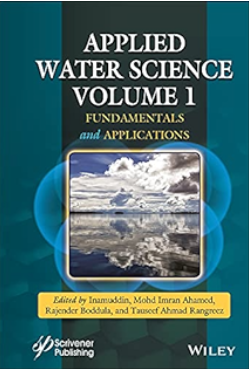Development of laboratory-cooked, water-resistant, and high-performance Cu-MOF: an economic analysis of Cu-MOF for PFOS pollution management and remediation
Abstract
Water pollution is a pressing global concern, with per- and polyfluoroalkyl substances (PFAS) being considered as “forever contaminants.” Among them, perfluorooctanesulfonic acid (PFOS) has received significant attention for its adverse effects on human health and aquatic ecosystems. This study aimed to design an innovative adsorbent for effective PFOS removal with exceptional water stability, improving its cost-performance trade-off. The current work simultaneously improved the stability of water of Cu-based metal–organic framework (CMOF) and increased its PFOS removal capacity by modifying it with amine-functionalized SiO2 nanoparticles (AF-CMOF). AF-CMOF presented a lower specific surface area of 999 m2 g−1 compared to CMOF with a surface area of 1098 m2 g−1. AF-CMOF showed remarkable PFOS uptake performance of 670 mg/g compared to the performance of the Cu-based MOF which exhibited a PFOS uptake capacity of only 22 mg/g. The most suitable pH for PFOS removal using both adsorbents was determined to be 3. In addition, AF-CMOF demonstrated excellent water stability, retaining its structural integrity even after seven days of water contact, while CMOF structure collapsed rapidly after four days of water exposure. Moreover, the study identified the significant pH influence on the PFOS uptake process, with electrostatic interactions between protonated amine functionalities and PFOS molecules identified as the dominant mechanism. The study’s findings present the potential of synthesized adsorbent as a superior candidate for PFOS uptake and contribute to the development of effective water treatment technologies.


 求助内容:
求助内容: 应助结果提醒方式:
应助结果提醒方式:


